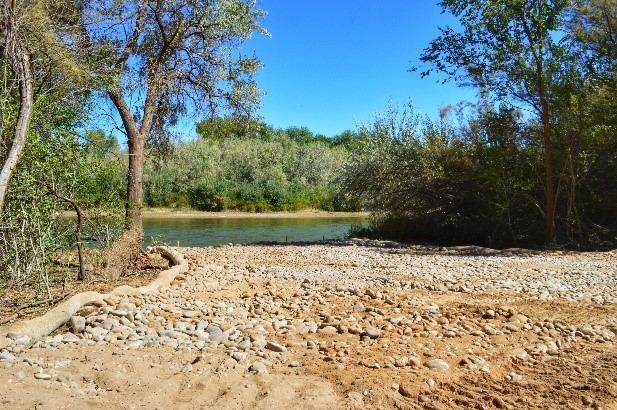WASHINGTON – The Office of Surface Mining Reclamation and Enforcement today announced over $1.6 million in fiscal year 2022 funding from President Biden’s Bipartisan Infrastructure Law to create good-paying jobs and catalyze economic opportunity by reclaiming abandoned mine lands on the Navajo Nation.

Mine Lands Reclamation
Department excavated two
hazardous subsidence features
in Nenahnezad, New Mexico,
located on Tribal Trust lands
within the Navajo Nation.
Subsidence from abandoned
mine lands had impacted
approximately 1,700 residents.
Photo courtesy of the Navajo
AML Reclamation Department.
Millions of Americans nationwide live less than a mile from an abandoned coal mine. The Bipartisan Infrastructure Law provided a total of $16 billion to address legacy pollution, including $11.3 billion in abandoned mine land (AML) funding over 15 years, facilitated by the Office of Surface Mining Reclamation and Enforcement (OSMRE). This historic funding is expected to address the majority of currently inventoried abandoned coal mine lands in the nation, which will help communities to address and eliminate dangerous safety and environmental conditions and pollution caused by historic coal mining.
“The Bipartisan Infrastructure Law is a once-in-a-generation investment and opportunity to address the majority of currently known abandoned mine land problems,” said David Berry, OSMRE regional director.
In fiscal year 2022, nearly $720 million in total awards were provided to 21 states, in addition to today’s grant to the Navajo Nation.
AML reclamation supports jobs in coal communities by investing in projects that close dangerous mine shafts, reclaim unstable slopes, improve water quality by treating acid mine drainage, and restore water supplies damaged by mining. It also enables economic revitalization by reclaiming hazardous land for recreational facilities and other economic redevelopment uses, such as advanced manufacturing and renewable energy deployment. As directed by the Bipartisan Infrastructure Law, funding will prioritize projects that employ dislocated coal industry workers.
This funding is a part of the Biden-Harris administration’s unprecedented investments in communities and workers to support an equitable transition to a sustainable economy and healthier environment after the closure of mines or power plants. This effort also advances the President’s Justice40 Initiative that commits to delivering 40 percent of the benefits of certain climate and clean energy investments to disadvantaged communities.
“The fiscal year 2022 Bipartisan Infrastructure Law funding will allow NAMLRD to access funds for unmet needs: capital improvement for office buildings, information technology upgrades, additional staffing to complete outstanding construction and maintenance projects, as well as enhance public relations through community outreach and site tours,” said Karen Bedonie, administrative department Manager, Navajo Abandoned Mine Lands Reclamation Department & UMTRA Program. “The NAMLRD expresses its gratitude in the allocation of funds to the needs of the department.”
These Bipartisan Infrastructure Law AML funds supplement traditional annual AML grants, which are funded by active coal operations. In the 46 years since SMCRA was enacted, OSMRE has provided more than $8 billion under the AML reclamation program to reclaim lands and waters that were mined or affected by mining prior to 1977.
– OSMRE –

